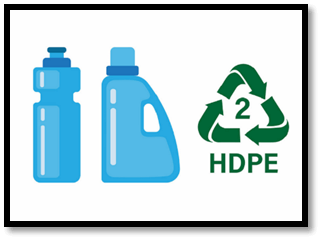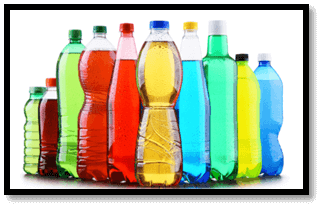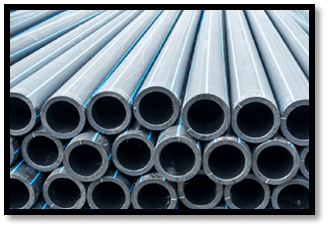What is the full form of HDPEHDPE: High-Density PolyethyleneHDPE stands for High-Density Polyethylene. High-Density Polyethylene (HDPE), generally known as Polyethylene High-Density (PEHD), is a thermoplastic polymer created from the ethylene monomer. It's sometimes called "polyethylene" or "alkathene" when utilized for HDPE pipes. Plastic lumber, geomembranes, corrosion-resistant pipework, and bottles made of plastic are all made with HDPE, which has a high strength-to-density ratio. HDPE has the "2" resin identification code and is regularly recycled. 
Properties of HDPEThe high strength-to-density ratio of HDPE is well known. The density of HDPE is 930 to 970 kg/m3. The ISO 1183 part two (gradient columns) test method is the industry standard for determining the density of plastics (MVS2PRO density analyzer). Despite having a slightly higher density than low-density polyethylene, high-density polyethylene (HDPE) has less branching, which results in better intermolecular interactions and compressive strength (38 MPa vs. 21 MPa) than LDPE. The difference in strength surpasses the variation in density, giving HDPE a higher specific strength. It is harder and more opaque, and it can endure considerably extreme heat (120 °C/248 °F) throughout short periods of time. High-density polyethylene, in contrast to polypropylene, cannot withstand typical autoclaving conditions. Branching is ensured to not occur under the right conditions and with the right catalysts (such as the Ziegler-Natta catalyst). 
High DPE cannot be glued since it is resistant to a wide range of solvents. Welding is required to create pipe junctions. The moulding technique used to create a particular sample can affect the material characteristics of HDPE; to some extent, this is influenced by the globally standardized testing procedures used to determine these parameters for a particular process. For instance, rotational moulding uses the notch constant tensile force test (NCTL) to gauge a sample's susceptibility to environmental stress cracking. HDPE pipes are appropriate for use with both wastewater and drinking water because of their desirable features. Uses of HDPEHDPE has a wide range of uses, and it's typically more affordable to utilize HDPE in applications where it fits with the characteristics of other polymers:
In order to prevent the contamination of soil & groundwater by the liquid components of solid waste, HDPE is also utilized as cell liners in category D sanitary landfills in the United States. Huge HDPE sheets are wedge or extrusion welded together for this purpose to provide a consistent chemical-resistant barrier. The pyrotechnics industry prefers HDPE over metal or PVC tubes for mortars because it is safer and more durable in the event of a malfunction; HDPE will likely rip or tear rather than shatter and become debris like the other substances. The most significant application for HDPE is the fabrication of hollow milk cartons, jugs, and other items through blow moulding, which accounts for one-third of global production, or even more, over 8 million tonnes. 
Above all, China, where beverage bottles made of HDPE were initially traded in 2005, is a huge market for solid HDPE packaging because of its expanding living level. The installation of HDPE pipes and cable insulation is a component of infrastructure expansion in India and other densely populated emerging countries. Discussions concerning the benefits of the material over glasses, metal, and cardboard, as well as potential health and environmental issues brought on by PVC and polycarbonate-associated bisphenol A (BPA), have helped the material.
Next TopicFull Form Lists
|
 For Videos Join Our Youtube Channel: Join Now
For Videos Join Our Youtube Channel: Join Now
Feedback
- Send your Feedback to [email protected]
Help Others, Please Share










